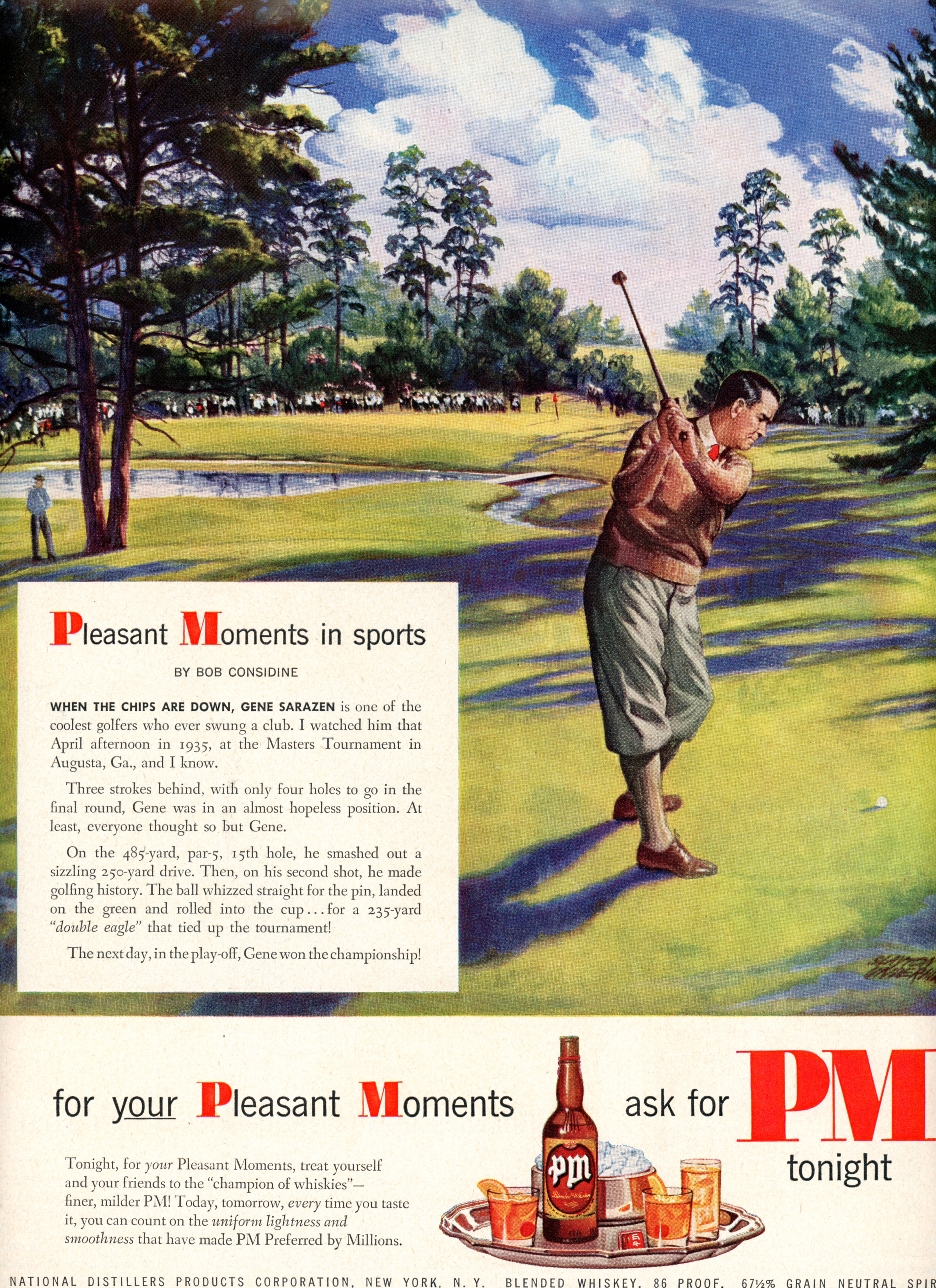Though restaurant criticism has been jealously commandeered by “journalists” over the past century, the sovereignty of this universally despised class continues to crumble. Why, if the public does not perceive reporters as honestly or ethically handling the news, would they trust them to recommend something to eat? Consumers are used to being lied to, but how often does the bullshit actually come to touch their tongues?
As waning newspaper “critics” continue their desperate imitation of equally loathsome social media influencers, the cracks in the edifice grow more obvious. The journalist lumbers along with the advantage of a professional photographer and imposing masthead but offers readers nothing more than a nickel tour of some place that’s already been open for months. Omission forms the deadly weapon by which they manufacture whatever opinion suits their purpose.
Expertise is not constructed via depth of experience or insight but invoked tautologically: a “critic’s” perception is salient only because they occupy the role, they sling the stars, they flex the atrophying muscle of a legacy media brand. Their work amounts to a shallow heuristic by which uninformed diners defer to restaurants approved by “authorities” whose power is drawn only from some glorious memory of a publication that is now a rotting corpse.
Social media influencers, by contrast, are more nimble. They have already posted pictures and heaped praise upon a new establishment by the time a newspaper “critic” even begins to cry about how hard it is to secure a reservation. The influencer steers consumers’ eyeballs and, thus, controls the conversation by forgoing any claim to expertise altogether. To them, food is a purely visual medium entirely divorced from taste, for only content that cultivates interaction matters. Thus, providing a perpetual feast for the eyes eclipses any duty to protect consumers from malevolent luxury marketing.
Influencers labor to build the kind of assumed authority that newspaper “critics” so effectively prostitute. Lacking credentials or any association with a “respected publication,” the narcissists among this ilk turn their lack of discernment into a blessing. Influencers build personal brands on the back of total permissiveness towards any business looking to leverage their reach to mislead a wider audience. Perversely, the parasocial nature of the relationship between followers and content creators incentivizes selling out. The greater degree to which an influencer displays the fruits of their “success” (be that purely through physical beauty or the symbology of coveted luxury goods), the more their affected audience feels they can attain the same by aping their model’s supposed “taste.” This mimetic (and manipulative) principle lies at the heart of all social media marketing.
As newspaper “critics,” with their dying gasps, imitate the influencers with trite tidbits of packaged visual content and hyperbole, they torch what was left of their credibility. Rather than distinguishing themselves as arbiters of careful analysis, they shout loudly and more frequently in a bid to stay relevant. They copy the influencer style but do not embody the role, leading to the sorry sight of a middle-aged “professional” offering the same paucity of insight in an even more unappealing package. By hoodwinking their superiors (who are still older and even more out of touch) into thinking this content keeps up with the times, such journalists keep the charade going just a little while longer. They bleed a few more drops of dignity from their publication’s hallowed name before it is finally stripped for parts.
Both newspaper restaurant “critics” and social media content creators assume the same false authority, one that—in earnest—belongs only to enthusiasts. Food journalists and influencers are, at their core, only promoters. More specifically, they are self-promoters who see a path to power for themselves by brokering public taste. Educating their audience or equipping them to discern quality on their own would, necessarily, put them out of a job, so a steady stream of lukewarm, superficial praise remains the order of the day.
The democratization of fine dining and mainstreaming of “foodie” culture signal that these gatekeepers’ days are numbered. The influencers, due to their mastery of social media, will consolidate control over the promotional apparatus. At the same time, they will absorb the duties of the former dining “reporters,” whose work has devolved into regurgitating press releases and grinding ideological axes.
Consumers will sidestep these self-important legacy media dinosaurs and opt for the relative honesty of influencers’ raw, on the ground footage. For such content, even if the creator is comped or ethically compromised altogether, is nakedly promotional and neutral to the degree that it simply showcases a steady stream of what’s new. Audiences will choose the authenticity of an unabashed, undiscerning “foodie” pimp over the false expertise of journalists whose method of curation seems arbitrary and opaque.
Faced with this usurpation, the remaining “professional” food writers will coalesce into a dwindling number of publications. They will pigeonhole themselves as best as possible and wring their identities for all they’re worth. They will outdo each other in hyperbolic praise, in sensitivity to perceived microaggressions, in the zeal with which they turn the beauty of food into yet another front for their (or their bosses’) culture war. Their audience of sycophants will shrink as an educated, experienced public begins to define quality on its own terms. The food journalists, having long abandoned their craft, will cling to their titles as the swell of irrelevance sweeps them away.
A couple of rats will make it off the ship just as it finally sinks, escaping to do-nothing professorships and advisory roles. They’ll leave behind a body of work that, during American gastronomy’s coming of age, sought to stunt its growth by dividing its audience and crippling its capacity to develop taste.
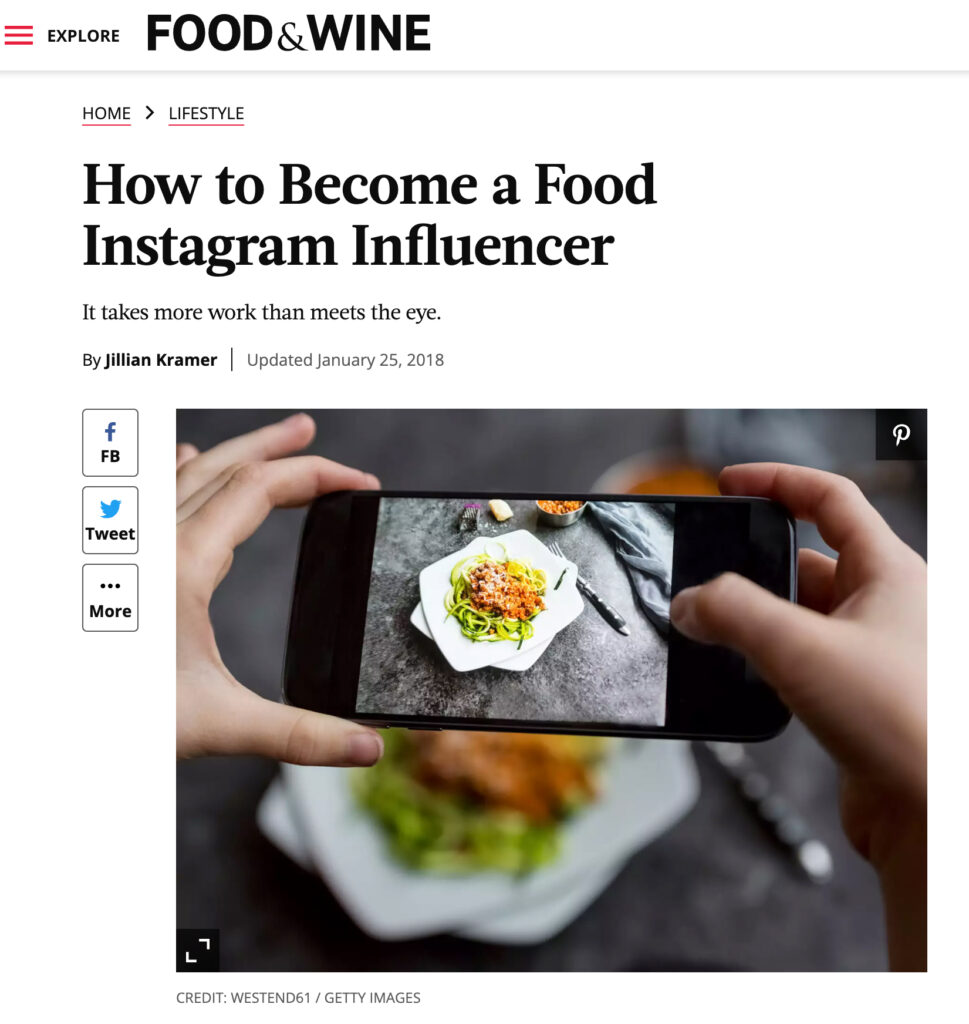
Finally free of this institutional tumor, the food content ecosystem will slowly recover. The influencers, you have already mentioned, will occupy the ground floor. They are the trawlers, the indiscriminate perpetuators of mere exposure marketing. By chasing engagement, these figures will connect their favored brands with eyeballs. Contrived, viral content will hold an advantage, but that is the nature of the chosen medium. The right post will reach the right, inexperienced diner and, perhaps, induce them to give something a try.
Serial dining, label whoring influencers will exist in a higher but parallel stratum. By marketing an overall luxury lifestyle, they’ll tempt aspiring (but insecure) fine diners to retrace their steps. This content, rather than indiscriminately trawling a great mass of food porn, will be carefully calculated to maximize the amount of status gained per dollar spent. It will work to establish the “trendy,” “fashionable” establishments for people who lack taste like the unwashed masses but think the right picture, in the right surroundings might fool people into thinking otherwise. This fabricated “foodie elite” will adopt the self-importance of the foregone food “journalists” but lack institutional authority. Thus, they’ll largely form an isolated echo chamber of pitiful one-upmanship that lacks any import for the larger dining culture.
Networks of influencers, whether low- or highbrow, may work in tandem to signal boost chosen establishments. While this broadens their reach in the short term, such coordination—once the audience observes several accounts operating in lockstep—quickly reveals itself as ideologically grounded or ethically compromised. A consensus manufactured from the same trite praise repeated ad nauseam begins to seem like an infomercial pitch. Those who butter their bread on the basis of social media relevance, of course, privilege being seen holding the “right” opinion rather than shaping any legitimate contention at all.
The intelligent consumer, no matter their level of experience, will eventually learn to read between the lines. Mere exposure to some visual expression of deliciousness will not prompt the insecure instinct to keep up with the Joneses. Rather, it will merely plant the seed of a craving that is thoughtfully satisfied.
That could mean sourcing some version of the featured, viral, mainstream comestible (like burgers, pizza, sushi, or tacos) locally. Or, in the case of a luxury experience, engaging in some further exploration of the concept. Satisfying each of these cravings involves a degree of research that occurs outside of social media. Mere exposure, even at an insidious, parasocial level, prompts an independent process of evaluation more akin to traditional, major purchasing decisions. Traveling to a far-flung hole in the wall in search of superlative comfort food or reserving a tasting menu several months in advance demands a level of commitment that is naturally suspicious of vapid promotional material.
Yes, the intelligent consumer may find a convenient substitute for the viral craving close at hand. However, the more singular the expression, the more they must grapple with actually going to the source. The increased cost (in time and money) that entails delivers them into the arms of the new authorities.
On one side, they find aggregated reviews from hundreds or thousands of “average customers” on sites like Yelp or Google. While these systems are infected with their own breed of “Elite” or “Local Guide” influencers, myriad data points paint a detailed, up to the minute picture of how a given establishment has been perceived. With a bit of experience, intelligent consumers can learn to separate the earnest feedback from the various expressions of bias and make an informed decision. Further, by searching keywords or scanning categories of collected user pictures, users can quickly hone in on highly specific information drawn from a wide range of historical reviews. When it comes to judging a place on the basis of a singular experience, this large sample size (even if it is self-selected) provides a high degree of utility.
On the other side, a review from some legacy restaurant “critic” would typically capture some consumers’ attention. Left starry-eyed by the imposing name of the writer’s publication, these people fail to process that some lone account of a meal eaten some months or years in the past contains less information than a couple contemporaneous Yelp reviews. In certain cases where such “journalists” bought into fading hype or failed to perceive latent potential, their one-time, flawed rating might continue to mislead consumers for years. By privileging the sugar rush of the clickbait news cycle over lasting accuracy, their work forms a cancerous presence until it is eventually scrubbed from the search results. The proliferation of paywalls, thankfully, has hastened that process.
In a future free of such “critics,” the corollary of aggregators like Yelp and Google will, naturally, reflect the inverse principle. The intelligent consumer, if they do not wish to consider a great mass of singular impressions (or, even worse, one self-important journalist’s flawed perception), will naturally gravitate towards a collection of impressions drawn from the same person. Unlike the serial dining influencer, for whom each visit to a restaurant yields the same superficial post, iterative or condensed reviews drive deeper interpretations that reveal the lasting essence of a restaurant. This content, stewarded by individual, specialized critics, accounts for consistency and growth long after an establishment’s opening hype has faded. It encourages like-for-like comparisons within the crowded genres consumers look to parse while constructing expertise on the basis of firsthand experience and documentation.
This future of restaurant criticism will come to resemble a tapestry of journalistic “beats” formed on the basis of individual proclivities. Neighborhood dining critics will intersect with genre critics (Italian, Mexican) who will contradict critics of particular forms (burgers, fried chicken), critics with particular dietary restrictions, and those that wish to define the city’s “best” through a native lens.
Such a system, which mimics the level of specialization seen in wine reviewing, would drive intelligent discussions between peers and their audiences while leading to the development of distinctive dining profiles. For “objective taste” can only be defined through the organization of countless subjectivities, and helping consumers find their matching palate (with regards to salt sensitivity, spice tolerance, portion sizing, and untold other factors) is the surest path towards securing them a superlative experience. This system would even allow individual writers to embrace socially conscious criticism if they so choose, yet they would use it as a crutch (in lieu of hard analysis) at their own peril.
Individual critics who define and defend distinct philosophies of taste will serve to corral matching segments of consumers and channel their patronage towards a smaller set of restaurants. Rather than being misled by murky organizations like Michelin, William Reed, and OAD—who, for their own commercial gain, rank restaurants to snare the lowest common denominator of customer—diners will have an individual champion. They will be steered towards establishments that satisfy their particular expectations (rather than some contrived “prestige”), empowering the respective chefs to explore and fulfill their singular style. The art of cuisine will advance as its practitioners spend less time trying to satisfy patrons who are predisposed to dislike their work. Rather, with a consistent base of kindred spirits to serve, restaurants can achieve their highest purpose: crafting transcendent hospitality experiences that affirm the values of all those involved.
Once this era of independent, decentralized, and distinctive food writing arrives, American restaurant criticism can begin in earnest. Free of gatekeeping tastemakers in it only for themselves, an inclusive, engaging, and reflexive process of growth will occur.
Chefs will indulge their individual proclivities for an understanding audience that encourages their experimentation to such a degree that it truly merits the title “artist.” Rather than stock menus will totemic luxury ingredients, restaurants will naturally gravitate towards seasonal produce (and derivative preserved products) that better encourage novel preparations. Rather than sourcing products from glamorous national purveyors, kitchens will forge local partnerships with artisans who may tailor their own crafts to meet each individual establishment’s demands.
In this manner, the balance of power in food culture will switch from detached, cosmopolitan media figures who privilege national or international acclaim towards a thoroughly locavore model that ensures native talent labors to improve the food system in their own backyard. This is not limited to more thoughtful sourcing, but the affirmation of shared, regional tastes. When every segment of a community finds a chef’s work legible because it is rooted in existing foodways, their success forms a rising tide that elevates taste across the board. By disincentivizing the importation of outside novelty or “luxury,” the status insecurity that ferments snobbery and polarizes finer expressions of dining can finally be defeated. Each city, free from the malfeasance of its supposed cultural “elite” can finally engage wholeheartedly in culinary self-definition.
Stewarding that process demands a new breed of critic capable of grappling with the depth of the experience economy. Rather than fitting interviews and press releases into prefabricated narratives, the future of gastronomy will demand a pure engagement with experience. American hospitality’s coming of age, its emergence as one of the defining art forms of the digital era, prompts you to look towards your peers from other disciplines for inspiration.
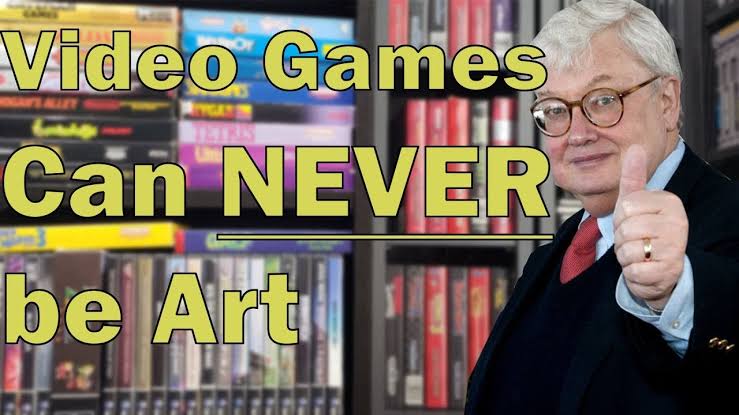
Video games, though it has been said they “can never be art,” have established their primacy in the decade since Ebert last wrote on the subject. The medium’s independent critics, though easily derided for being obsessed with children’s toys, shoulder a bigger burden than those who opine on works of the stage, screen, page, or gallery. They fight not only against their outright infantilization, but a professional journalistic apparatus that has sold itself to the biggest studios and cheerleads the same crap to an uneducated public year after year. These longtime enthusiasts witness, with each new release, how their favorite franchises are sapped of their spirit, filled with the latest passing fads, and transformed into commercialized husks.
Independent video game critics are brothers and sisters in arms who might guide their gastronomic counterparts on how to effectively champion small, sincere expressions of art in the face of goliath marketing budgets. Their actual craft, it should also be noted, must contend with the nature of active experience rather than encouraging passive enjoyment. For games must primarily be judged on gameplay and not the identities of those who created them. They must not be judged on the wider “representation” provided by fictional characters or the diversity of those who embrace them as avatars, but the nuts and bolts of interaction and immersion.
The best gaming critics are adept at tuning out all the noise that has resulted from the mainstreaming of their (formerly) nerdy hobby. They remain faithful to the genres they have seen bloom from 8-bit graphics into 4K virtual reality in their very lifetime. They subvert the manipulators who perpetually seek to drive a wedge into every pure expression of fun and defend the unifying character of art that is truly sublime. These critics, if their methods are adapted, may provide the key to understanding how restaurant criticism can achieve its highest purpose.
You have previously expressed your admiration for those who catalogue and analyze every aspect of Disney’s theme parks, and they form, perhaps, the third part of this critical-experiential triumvirate.
While video game reviewers describe a mediated digital experience, restaurant reviewers largely occupy the limited perspective of the table, and theme park reviewers grapple with an entire “world” within a world. Nonetheless, in each case, the boundaries of the experience are strictly defined. Interaction occurs within a curated space possessing “frontstage” and “backstage” areas used to help manage a sense of immersion. The performers themselves can fail in some way and spoil the illusion, as in musical events or stage shows, but there remains an essential, reflexive element to video games, dining, and theme parks.

Websites like Disney Food Blog embrace gargantuan tasks like ranking every single restaurant within each of Disney World’s distinct parks. Their work also encompasses the many smaller stands interspersed between attractions and the plethora of establishments located within a range of lodging options. They not only track how classic restaurants go from good to bad to good again over time, but curate guides based on consumer characteristics (first-timers, special dieters, bucket listers). Rather than rating establishments just once, these critics are perpetually engaged in evaluating quality so that they may deliver their wide range of readers with the most accurate account of a living, evolving hospitality “world.”
This metacritical dimension to theme park criticism takes myriad forms. A restaurant or attraction’s aesthetics, service, and offerings are judged in isolation, with reference to the subdivision of the respective park they are located in, in accordance with the overall theme of a particular park (relative to others), and against the full range of options available across the entirety of Disney’s property.
The experience provided by a certain establishment is considered from a variety of consumer perspectives: how would young children, adult couples, or families on a budget feel about the value proposition? How would they, reflexively, interact with the space? Can it withstand a crying baby? Does it offer a romantic view or a generously stocked bread basket?
Rather than scratching the surface of its subject matter in a bid to appeal to some nonexistent “average customer,” critics like DFB occupy every category at every extreme. They put themselves in the shoes of every type of visitor, explore every path throughout the park possible, and steward readers towards the most personalized and pleasurable trip (for their unique conditions) possible. These critics marry their personal proclivities (for certain environments or foodstuffs) with the utmost tolerance towards differing tastes. Their writing is sincere and opinionated but avoids any trace of bias by engaging directly with a full range of divergent views.
Given that it is impossible to appreciate all the attractions and consume all the foods offered by a theme park in one visit, these critics embrace the role of the guidepost. Some aspect of the experience will hold some possible appeal for a visitor that even the most inclusive writer cannot possibly imagine.
So sites such as DFB aim at comprehensively experiencing and describing everything and doing so constantly so that the breadcrumbs are there for some unknown reader to interpret in a wholly personal way. Wisely, these critics know their highest purpose is not to discriminate or define relevance on behalf of their audience. Rather, they succeed by offering the most data points with the highest degree of honesty and tacit acceptance of dissenting opinions possible. Criticism, in this manner, comes closer to humble consumer reconnaissance than personal branding as a “tastemaker.”
Though video game critics engage with digital worlds that drastically differ from the visceral experience of theme parks, they, at their best, adopt a similar critical philosophy.
For most genres of interactive entertainment, “completing” the experience denotes—at minimum—reaching the conclusion of the narrative, completing the final mission, and/or defeating the final boss. The mainstream gaming critic, driven by deadlines and the need to be seen holding the right opinion at the relevant time, rushes to the finish line and writes some superficial impression, Buttressed by the authority granted to them by their publications or their inclusion in review aggregators, these gushing encounters with the given game are used to drive a feeding frenzy at the time of release.
These professional critics, who are regularly given early access to the product in order to aid their work, have little reason to bite the hand that feeds. No matter how many consumers they ultimately mislead, these individuals’ reputations are shielded by the mass of concurring opinions from fellow sell-outs. No matter how good or bad a game actually is, being able to opine first ensures that the mainstream reviewers’ personal brands continue to grow. Why cut off one’s access to a lifelong gravy train of exclusivity by defending, even on just one occasion, the pocketbook of the average gamer? Why engage in the hard work of technical criticism when it takes far less effort to ooh and awe along with the rest of the trained seals?
By completing the game as quickly as possible and ignoring any deeper probing, mainstream video game critics are only left judging the surface of the work. They are drawn to comment on the most obvious aesthetic properties (screenshots of which accompany their content), seemingly “novel” features, and unrelated tripe like character or production team “representation.” Perhaps, along with their early access to the product, these writers are gifted an assortment of swag and a prefabricated narrative to run with from their friendly marketing department. The task is made clear: promote the game and promote yourself by riding the tide of gimmicks cooked up in the boardroom to most effectively capture an identified segment of consumers.
In this manner, core elements like the intricacy of gameplay, sense of immersion, degree of personalization, fidelity to different playstyles, and overall replayability become obscured by the sunshine and rainbows of hack “journalists.” Perpetuating hype for the sake of snaring lowest common denominator appeal flattens any transcendent quality the interactive form of entertainment might claim.
A video game, at its best, can outdo comparably static forms of art like film by nature of its reflexive, responsive adaptation to the latent character of its perceiver. The decisions an individual player makes, within a world crafted with enough care, should yield a distinct experience through which the narrative can better penetrate their singular psyche. By granting users a high degree of control over their avatar, developers empower their audience to identify with characters and the overall story in a manner that is typically mediated by the quality of direction, editing, and acting in a motion picture.
While the best works of fiction resonate across time and culture by touching on shared, indelible aspects of the human experience, interactive storytelling, at its best, might present a more particular, more resonant slice of life than the traditional, static masterpiece. When art grapples with humanity’s most complex moral and ethical questions, great artists craft multifaceted characters that embody the species’s essential contradictions. By empowering the audience to indulge in their singular proclivities and delusions, video games can present an assortment of tailormade stories that strike segmented consumers even more deeply.
The mainstream gaming critic, in their haste, only conveys one story to their readership. In a bid to adopt the imagined everyman or everywoman’s perspective, such “journalists” negate the work’s most distinctive (and salient) dimensions. They serve a bland, palatable account of their experience that gives the game’s marketing department the upper hand over consumers. For potential buyers will likely find some aspect of the product’s concocted (often misleading) advertising campaign appealing and then resort to heuristics to decide upon whether or not to purchase.
Often, so long as the game’s aggregated critic score is high enough or a singular review avoids ripping it to shreds, the consumer will be convinced. It is hard, after all, for critics to win against carefully formulated, multimillion dollar media buys, and, sadly, most choose to be complicit in the ruse.
By writing from a position of personal nostalgia and obsession, the independent video game critic subverts the malfeasance of their mainstream counterparts. Drawn, as most enthusiasts are, to certain genres they have grown to love, these writers have cultivated an exhaustive knowledge regarding particular categories of products. A higher density of reference points within a more narrow range of works imbues their criticism with an internal logic that enriches the analysis.
Whether a given example of a genre is good or bad, it will fit within a larger tapestry of products that possesses a consistent pattern of elements to be affirmed or denied with each release. By taking readers behind the curtain and revealing the common structures that underlie supposedly “unique” games, independent critics inoculate their audience from the effects of promotional flourish.
Thus, while mainstream critics accept the marketing conceit that each product is a one-of-a-kind work of “art” to be lavished with praise, decentralized, specialist reviewers strip their subjects of superficial appeal. They discount the new coat of graphical paint, the concocted “representation,” and the gameplay gimmicks to get at the bones of the experience. Independent critics start their appraisal where mainstream “journalists” fear to tread. In doing so, they perceive video games as something greater than a disposable few hours of mass entertainment.
In practice, these specialized reviewers adopt a perspective not unlike the theme park critics. They do not assume that one path or playstyle fits all; rather, they take it as their duty to explore every strategy, every side quest, every alternate ending, that might define a possible, individual experience. They cover every inch of a digital terrain that can only be properly judged in its totality.

These video game critics snub the egoism of the mainstream byline and engage with their audience through online guides, dedicated wikis, “Let’s Play” videos, and live Twitch streams. They not only exhaustively catalog every element of their chosen work, but update the information in accordance with each new version or downloadable content release. At the most extreme ends of the spectrum, dedicated critics concern themselves with speedruns (competitively completing a game as quickly as possible), longplays (completing a game as fully as possible), and modding (modifying game files to personalize or expand upon content).
These last categories are truly the bread and butter of any work’s most obsessive fans, for they push the mechanics and boundaries of the experience to their absolute breaking point. Likewise, while there exists some degree of tongue-in-cheek “slumming” (playing a woeful game for comedic effect), only products of a certain quality can generally withstand such a treatment.
To be worthy of an enthusiast’s robust mapping, the chosen software, at core, must be built upon a functioning engine, run smoothly, and deliver a consistent experience to a range of consumers who might be drawn to the critic’s related content.
More practically, the game often contains a wide range of characters or items and a detailed, pervasive, or randomized world worth cataloging to some degree of detail. The controls will be smooth enough to encourage mastery of the mechanics and elements of personalization (with regard to the avatar or progression of the story) engage different players in unique ways.

An open-world action game like Grand Theft Auto, for example, features myriad missions (main story and optional), vehicles/weapons/properties to collect, character customization options, and points of interest on a sprawling map. An open-world roleplaying game like Elder Scrolls contains, in addition to some of the aforementioned elements, a leveling system that powers the development of a diverse array of character skills and a robust crafting component used to fashion items.
First-person shooters (in the Call of Duty mold) typically lack the open-world quality that lends itself to a massive amount of explorable detail. However, within the bounds of a more controlled experience, they may still feature character customization, skill specialization, item unlocks, side quests, divergent paths through the story, and advanced difficulty levels to tackle upon the game’s completion. Third-person, closed-world action games like Metal Gear Solid generally make up for their lack of a pervasive environment by encouraging a wide variety of playstyles (lethal vs. non-lethal, direct confrontation vs. stealth) with an adaptive enemy AI. These strategies are fueled by a variety of items and mechanics to choose from.
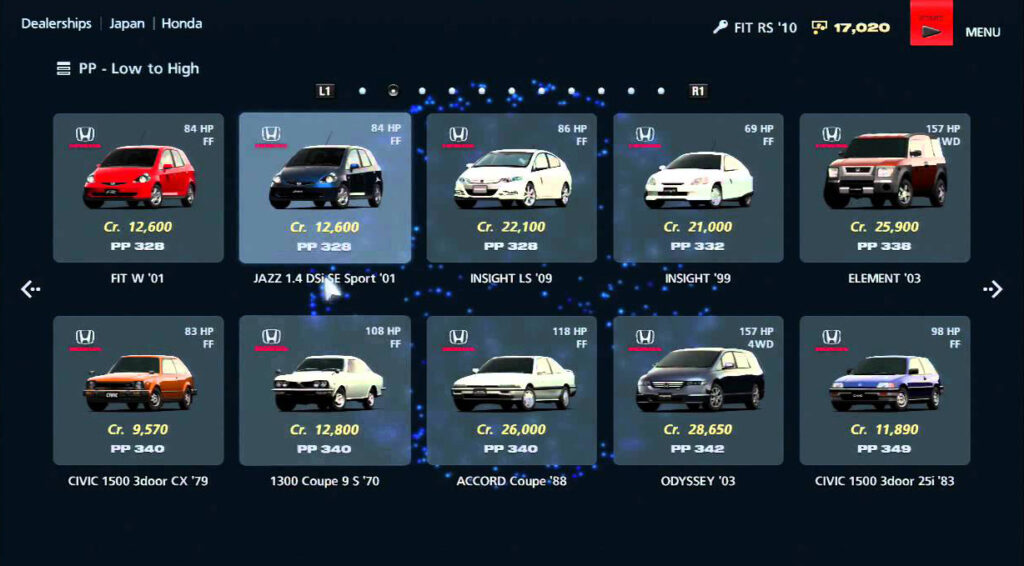
A racing simulator like Gran Turismo, of course, will comprise a variety of cars, with all their customization/tuning options, along with a range of courses and handling schemes with which to test them. Platformers in the Super Mario mold are driven mostly by the mastery of gameplay mechanics but may offer a choice of various routes between levels, throughout the story structure, or with regard to side quests and collectibles. Even sports titles, though judged primarily on their fidelity to the “real thing,” may contain unlockables or persistent franchise building elements.
Out of all these categories, mainstream critics are best positioned to assess platformers and sports games due to their linear nature. Without immersive worlds, diverse playstyles, or intricate item or skill systems to contend with, their analysis can focus primarily on the graphics, controls, level of difficulty, and story. These surface-level categories, though unsuitable as the only means of assessing other genres, can be effectively applied to works that are geared towards one playthrough (platformers) or repeated match play (sports games). This, in large part, is due to the fact that consumers’ experiences are not likely to diverge no matter their level of obsession or skill. This is by design, for platformers and sports games are two of the most mainstream genres, and their developers avoid needless complexity for the sake of securing broad appeal.
First-person shooters also form one of the most popular categories, and their developers, too, privilege the kind of eye-catching design and accessibility that will move a boatload of units. Mainstream critics, thus, can effectively engage with the surface of such works without missing any large part of the experience. They and the average player will both occupy the same perspective, utilize the same selection of weapons, and complete the same sequence of missions (with only small stylistic differences) in completion of the game. However, the crowded nature of the genre and the competitive, skill-based dimension of its multiplayer modes leave room for independent critics to have their say.
As an enthusiast, the independent critic can better speak to how one particular entry in a franchise compares to those that have come before, noting how faithfully a studio holds to its distinct style and quality standards. They can also speak to the nature of the metagame in competitive play, such as the efficacy of different strategies, the balancing of various weapons, and the presence of unfair “pay to win” elements. These topics might have little salience for the consumer who looks to engage primarily in the title’s main story or casually in multiplayer modes. However, they will be particularly important for more experienced gamers as well as buyers looking to achieve optimum value with regard to comparable products in the marketplace.
Third-person, closed-world action games comprise a level of complexity that begins to reveal the limits of the mainstream critic’s usefulness. Evaluating such a title’s graphics, controls, level of difficulty, and story may help orient it relative to every other product across every possible genre. However, the necessity of publishing quickly (to compete with rival journalists and fulfill the whole purpose of being granted early access), demands such writers forge a limited, if not hurried, path through the story. Despite this, their review adopts the tone of the everyman. A thoroughly personal, even egotistic encounter with the game is spun into a representative account. The work’s many potentialities are ignored for the sake of saying something, anything in a timely manner that might work to attract eyeballs to the publication and spur sales for its content providers.
An intelligent consumer would turn to aggregated professional and user reviews to penetrate beyond one mainstream critic’s singular experience with the product. The most intelligent have learned to take the “professional” consensus (whether positive or negative) and check it against a selection of the highest or lowest appraisals from comparably average people. There will surely be plenty of fanboys and haters to filter out, yet, between the lines, such research will yield accounts that subvert the manufactured promotional consensus.
This process is not so much one of determining “truth,” but of gaining exposure to multiple subjectivities from which an individual can find their closest match. Even if a consumer cannot quite find the particular information that matters most to them, they can take a leap on the basis of a diverse sample rather than deferring to a journalistic “authority” constructed solely on the basis of the publication’s name recognition.
The independent reviewer, on the other hand, might take more time to engage with the game. Nonetheless, driven by obsession with the genre and a clear critical identity, they live any and every experience contained in the aggregated accounts. Rather than appealing to the publication that employs them as a signifier of “expertise,” the thoroughness of these reviewers’ content establishes their credentials out of whole cloth. Such critics might present personal opinions; however, they are grounded by the larger context of their deep engagement with the subject matter. The duty to inform trumps any urge to tell their audience—implicitly or explicitly—how they must enjoy a title, and the consumer will find the process of weighing appraisals from a variety of sources simplified.
The enthusiast’s conception of a game’s quality will stretch its value proposition to the limit. Playing the title multiple times in multiple ways, contending with different difficulty levels and pursuing a range of strategies, reveals the many layers of its design. On other occasions, this repeat exposure will work to reveal a cookie-cutter experience that is pleasing on the first encounter but descends into tedium. By bearing this kind of boredom, the independent critic can denote if the unlockables and rewards that come with additional playthroughs are worth it. They can judge if there is any real replayability at all, or if the given game is a one-off, disposable experience altogether.

Simulators, whether racing, trucking, forklifting, flying, or farming, are a special case. Ostensibly, such games retain a narrow focus on a singular set of mechanics used in a regimented, real-world setting. The software contains a finite number of true-to-life vehicles to be handled in accordance with their actual characteristics. The game’s engine, rather than privileging accessibility or fun, seeks to mirror the experience of a professional operator. Elements of customization might exist, but the work maintains a serious tone geared towards a small segment of hobbyists.
Thus, only the most popular examples of this genre will merit a mainstream gaming critic’s attention. Most simulators have no story to speak of other than a set of missions or tasks that test the mettle of the given equipment. Their environmental graphics, likewise, are given little priority by developers who are most concerned with fidelity towards real-world vehicles. That realism takes its clearest form in the intricacy of the controls, which naturally make for a high difficulty level. The “fun” of the game comes from mastering the operation of a machine that comes as close to its actual counterpart as possible. It’s a value proposition that only a specialized segment of consumers would ever willingly subject themselves to.
Unless a mainstream reviewer is particularly thrilled by the prospect of operating a piece of machinery in fulfillment of mundane, blue collar labor, there is little for them to convey to a popular audience. At best, they can admire the game’s level of visual detail or warn readers about its prohibitive difficulty. The most effective means of evaluating the title, its authentic replication of the machines being simulated, often escapes the mainstream critic’s capabilities. They have no experience with the real thing nor any predisposition to appreciate convoluted controls as a signifier of faithfulness to reality. The reviewer’s publication butters its bread by connecting its audience to easily digestible entertainment, not by steering them towards arcane expressions of obsession.
On the contrary, an independent critic that chooses to engage with a simulator will, necessarily, have chosen it with some intention. They might have a real-world reference point to the machinery being recreated digitally or, at the very least, have decided to dedicate themself to its in-game mastery.
Whatever the case, such a reviewer is positioned to look past entry-level concerns and report on the meat of the experience. Driven by passion, they can speak to fellow enthusiasts, as well as those who might aspire to engage with such a particular niche. This aficionado has no burning desire to shepherd the mass consumer. They might guide their fellow gamers, but not to dumb down the gameplay for the sake of encouraging sales. An intelligent critic of a simulator writes from within the target audience and, by living their obsession, provides the public with an honest account of what a newcomer stands to gain by embracing the challenge.
Open-world action and roleplaying games, in the sense that they provide players with a level of freedom that most closely correlates to actual reality, display the starkest contrast between mainstream and independent critics.
The former present what they consider to be a representative slice of a massive work in accordance with their deadline. The latter take it upon themselves to explore the digital environment as exhaustively as possible, for it is the only proper way to judge its greatness against other title’s offering (or claiming to offer) the same level of immersion.
The former convey their experiences via short articles and scores that become obsolete a couple weeks after launch. The latter create perpetually updated walkthroughs and guides that retain their relevance so long as the game is played at all.
The mainstream critic will forge one path through the story on the basis of their own natural playstyle and publish their account as gospel. The independent critic will probe every aspect of the game world and push its mechanics to the breaking point.
The former’s content will provide the new release with a superficial stamp of approval/disapproval. The latter’s content with systematically map the work’s depth to a degree that highlights, by its sheer existence, the myriad details that amount to an absorptive, replayable, and perhaps even timeless experience.
Unknowingly, the mainstream reviewer’s lack of any metacritical consideration denies the game’s most adaptive, reflexive, and unique qualities. Unknowingly, the independent reviewer’s obsessive engagement with a genre they love reveals just how responsive the game is to countless kinds of players.
Organizing the full breadth of the digital world and its countless possibilities serves to underscore the medium’s fundamentally personal nature. In doing so, the independent critic, almost by accident, touches upon the transcendent quality of gaming that affirms its status as an art.
With some understanding of video game criticism established, you can now return to a more general discussion of how experiences are evaluated.
Whether in a digitally mediated (gaming) or complete unmediated (theme parks) form, the nature of experience goes beyond personal interpretation to include interaction and reflexive reaction. No matter how many ways there may be to analyze a film, a play, or a painting, each member of the audience participates in the same experience. The size of your screen or position of your seat in the gallery or theatre might lead to some slight variation; however, there is little question as to what an “ideal” viewing requires: an unobstructed sightline with clarity of picture and sound. The performance of a live production might change slightly from night to night, yet the work is still static insofar as each member of the audience is left to interpret the singular rendition’s success without having any actual effect on the proceedings.

More casual forms of dining, defined primarily by value, speed, and consistency, might also be called static. Other than a baseline of friendly interaction with the staff and some limited degree of item customization, the vast majority of customers have quick, routine experiences meant to fuel them for the rest of the day or draw the night to a close. You might compare this format to the most casual genres of video games: arcadey sports, shooting, or platform titles meant to provide a short, thoughtless diversion. You might also compare this format to the most casual variant of the theme park: a local Chuck E. Cheese that marries carnival games, pizza, a ball pit, and animatronic shows with the bare minimum of world-building.
Each of these examples, while still qualifying as an “experience,” presents an obvious value proposition. They form the so-called “shallow end” of the experiential spectrum. The customer’s money secures them a well-defined product, be that a hamburger, a shoot ‘em up, or a couple hours’ entertainment in the care of their favorite anthropomorphic mouse. The sense of immersion within these respective environments is not ignored; however, it is channeled towards that same clear purpose. The hamburger joint should have comfortable seating, condiments, a soda fountain, and clearly posted menus. The shoot ‘em up should have a variety of weapons, enemies, settings, and explosions. The Chuck E. Cheese should have attractive lighting, intuitive placement of the various attractions, and a selection of prizes that spur activity.
However, in each of these cases, there is no sense of mystery or hidden depth to discover. You get what you pay for, and part of that entails restricting consumer choice so that they do not take a “wrong turn” and waste their time and money altogether. Controlling the environment, whether digital or real, and the range of interactions customers have within it offers these casual, volume-based experiences a commercial advantage. Likewise, these highly accessible concepts and works are easily evaluated because, by design, they fit their users to a limited number of marketing categories whose perceptions and potential decisions are known and planned for. The “average experience,” thus, can accurately be attested to by any garden variety critic whose proclivities fall somewhere within the popular zeitgeist. The fact that a given writer is employed by a major publication would, in itself, signal they are adept at perpetuating the desired narratives of the cultural elite.
Nobody would confuse McDonald’s, Call of Duty, or Chuck E. Cheese for “art” (though you would be receptive to such an argument if someone wished to make it). These products exist more as testaments to the craft of hospitality or entertainment mastered to such an extent that they can provide a consistent, enjoyable experience for myriad customers in countless markets. If they changed in any fashion as a reaction to a single person’s experience, they would spin in circles. These behemoths look to satisfy everyone but can only respond to massive shifts in the marketplace. Such casual, highly accessible products, though they might seem more interactive and, thus, experiential than film or theatre, view stability as a virtue. They are static satisfiers of only the most base emotions.
Towards the middle of the experiential spectrum lie “authentic” restaurants, simulator games, and mid-range theme parks. Structurally, an “authentic” eatery would advertise itself as such, rooting its cuisine in particular foodways drawn from a people or place and dated to a specific era. It would privilege the preservation of ancestral ingredients, customs, techniques, and terminology in a space that likely imitates the aesthetic properties of its creative wellspring. Simulator games, as already discussed, aim squarely at faithfully replicating the controls of a complex piece of machinery within a typical operational setting. A mid-range theme park, like SeaWorld, NASCAR SpeedPark, or Santa’s Village, aims to faithfully capture the excitement of distinct settings like the deep sea, a professional raceway, or the North Pole. Though it might encompass a sizeable terrain and number of attractions, the overall sense of fantasy is bounded by a narrow focus.
These examples, in accordance with their higher price points, are greater in scope and complexity than the hamburger joint, shoot ‘em up, and Chuck E. Cheese. (The simulator might not cost any more than a AAA shooter but may allow the consumer to purchase a supplemental, specialized control setup like a racing wheel).
Each of these examples particularly privileges a strong sense of immersion that is missing from the more casual, digestible experiences. However, the “authentic” restaurant, simulator game, and mid-range theme park each operate with regard to a particular reference point. The preparation of a dish, control scheme for a vehicle, or presentation of aquatic life must fulfill a vision of “reality.” A given customer might have no idea how the traditional food should taste, how the forklift should handle, or how the killer whale should swim, but they buy into the expertise of the purveyor. The consumer accepts some restriction of their own ability to control and define the experience for the sake of appreciating something “genuine.”
The value proposition is something like “enter into this lifelike world and learn how things are really done.” The consumer, generally, will have some particular interest in the subject matter. They may not be able to neatly bound the exact amount of entertainment they will receive for their dollar; however, they feel confident they are purchasing a comprehensive exploration of the topic at hand. The “authentic” meal will offer a couple hours of cultural enrichment, the simulator game will offer many hours of true to life challenge, and the mid-range theme park will offer a day of fun that revolves around a distinct focal point.
These experiences are generally not so vast as to demand much outside guidance. Consumers select a particular theme that appeals to them and trust they will enjoy the deep dive. While the “authentic” restaurant, game, and park might not rely solely on appealing to the broad population, it must be able to satisfy members of the mainstream who take the plunge. Thus, mainstream critics are positioned to speak to how an average customer might perceive the product. Playing the part of the everyman, their content regarding such experiences may help readers who are on the fence judge the restaurant, game, or park’s accessibility. Review aggregate sites, likewise, expand the range of singular, popular impressions a would-be customer has to draw on when determining how they fit within that mainstream category.
An independent critic, self-selected for their enthusiasm with the genre, approaches things from the opposite perspective. By interest in or mastery of the chosen topic, they can audit the “authenticity” of the restaurant’s cuisine, the faithfulness of the simulator’s controls, and the immersion of the mid-range theme park as constructed through its attractions. These critics take a top-down approach that naturally appeals to other enthusiasts and to average consumers who might feel wary about their potential purchasing decision. They wield the kind of expertise that can be used to burst the bubble of illusion should an operator take advantage of customers’ unfamiliarity with the “real thing.” In doing so, enthusiasts counter authenticity’s malevolent power to prop up racial chauvinists and enforce submission in matters of taste.
Towards the deep end of the experiential spectrum, you would place fine dining, open-world video games, and a top expression of the theme park form. Structurally, a fine dining restaurant would include elements like an engrossing setting, plush seating, fine plateware, deferential service, one or multiple set menus, beverage pairings, a wine list, tableside presentations, a tour of the kitchen, and a parting gift. The open-world video game would encompass a sizeable terrain filled with countless buildings, vehicles, NPCs, and items in which players’ avatars could be highly personalized and controlled to engage in a wide variety of activities that may even violate reality’s societal norms. The theme park would also comprise a sizeable terrain filled with countless themed subdivisions each filled with attractions, eateries, vehicles, greenery, mascots, wildlife, fireworks, and special events.
Each of these examples is far greater in scope and complexity than the hamburger joint, shoot ‘em up, and Chuck E. Cheese. They also present a noticeable step up from the “authentic” restaurant, simulator game, and narrowly focused amusement parks. This, of course, correlates to the higher price points maintained by fine dining and top-tier theme parks. (AAA video game titles, across all genres, tend to be similarly priced; however, open-world action and roleplaying games might demand more advanced hardware to run at maximum settings or offer a greater amount of paid add-on content that, in effect, raises the net cost).
The value proposition, in line with the additional spend, is something like “look at this world of wonder and untold possibilities you will be able to enter into.” The consumer struggles to rationally bound the amount of entertainment they are paying for. They may have some sense of how many hours they will spend on one of the experiences, and they may cross-reference one restaurant, game, or park’s many offerings against a comparable product. But, with so many details to contend with, only those of individual salience will stand out. The rest, even if they ultimately play a decisive part in affirming the experience’s quality, will have to be seen firsthand.
Luxury marketing, when wielded to promote a product of adequate complexity, dabbles in the world of emotion and illusion. Social media influencers, whether comped or simply looking to squeeze all the prestige they can out of what they already paid, act as the marketers’ frontline guerilla force. They are the poster children for whom a potential buyer might become if they are brave enough to part with their hard-earned money. When this psychological manipulation works, it works very well. More commonly, it will arouse interest and slowly ingratiate itself to the point that a would-be consumer seeks out some heuristic that might help sanction taking such a plunge.
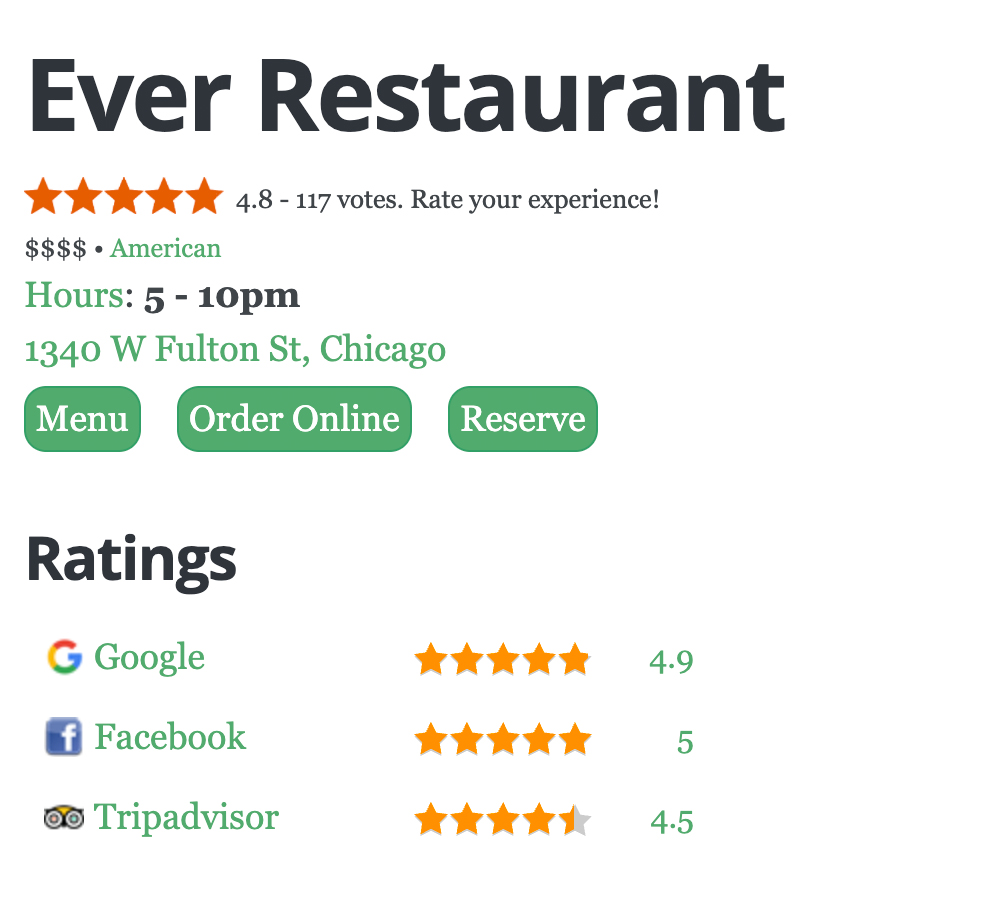
Their search engine will reveal star ratings based on aggregated user reviews or the “authority” of local/national publications and organizations like Michelin. If the consumer clicks further, they can sort through the individual, anonymous accounts or the pompous, promotional screeds of the professional journalists. A couple pictures, a couple keywords are all it takes to cement a lasting impression: “this does or does not seem worth it.”
The consumer makes a reservation, purchases the game, or books their trip to the theme park with certain expectations in place. In some cases, their ultimate experience might align perfectly with the critic’s limited perspective or the amalgamation of other customers’ perceptions. They eat the meal, beat the story, and ride the rides already knowing how they are supposed to feel. Lacking knowledge of the category, they cling to the “average experience” to assure they get their money’s worth. Herded towards a mass, interchangeable manner of consumption, this consumer flattens the world of options the immersive experiences each entail into a static, easily digestible, encounter that minimizes the risk of disappointment.
In other cases, the consumer only realizes once they sit down at the table, hold the controller, or walk out into the park that their heuristics have failed them. They are the “special case,” the “wrench in the machine,” the distinct individual for whom the whole marketing paradigm malfunctions.
For the “special case” diner, the “renowned” restaurant is perceived as crowded or awkwardly empty, too bright or too dim, too warm or too cold, with food that is over- or under-seasoned, portions that are too big or too small, and a beverage program that is either paltry or utterly overwhelming in its selection. The service may be infantilizing, offputtingly snobby, or altogether discriminatory. Special celebrations or particular dietary restrictions could be forgotten or ignored. The chef, the manager, or one particular server might be having the worst night of their lives. A neighboring table might cause a nightmare for the entire dining room. Maybe the consumer or their dining partners have subconsciously or consciously decided they are not going to have a good evening. The sunshine and rainbows promised by the critic’s solitary visit or a composite of online reviewers seem like a sick joke.
“How do people eat this crap up?” such a diner might think as they scurry back towards a more familiar haunt. The restaurant’s rare bad evening, from the perspective of a first-timer, discredits the sense of the norm that so many singular accounts testify to. Viewing their critical guides as so many sheep and sycophants, the exceptional consumer becomes poisoned against the entire promotional enterprise. They’ve been made to feel like a sucker, and they won’t waste their money on any fancy schmancy restaurant ever again.
The “special case” gamer who buys and boots up the latest AAA release may encounter a game-breaking bug absent from the critics’ pre-release copies. They may perceive graphical flaws hiding underneath the glossy photos, controls that are too clunky or intricate, gameplay that is tedious or suffocatingly narrow, a world that lacks meaningful interaction, a senseless story, shallow customization options, or a half-baked design that locks its best content behind an additional paywall. Repeat playthroughs may reveal how elements that seemed unique and reflexive the first time around only provided the illusion of divergent choices. The game’s multiplayer modes might be broken by exploits or the existence of a pay-to-play advantage. The hours of entertainment such a consumer paid for, the quality that other players and critics attested to, devolves into nothing more than a disposable, forgettable exercise in frustration.
“How do people eat this crap up?” such a gamer might think as they return to some older favorite release that continues to satisfy. The new title’s technical issues, gameplay imbalances, and dearth of content at launch, even if fixed later on, overshadow any potential for growth from an engaged developer. For the exceptional consumer now views the gushing critics and user reviews as biased fanboys propagating the reputation of a product they preordered months ago (or to which they were granted access for free). Such an audience was sold on the value proposition hook, line, and sinker. Their advocacy amounts to nothing more than an affirmation of their professional critical “status” or a post-hoc rationalization of their purchasing decision. The “special case” gamer is made to feel like a sucker, and they won’t waste their money on a shiny new AAA title ever again.
The ”special case” theme park goer who buys the ticket and takes the ride may find that they spent the vast majority of their time waiting in line, spinning in circles, and making the most of a range of options that amount to other guests’ leftovers. The glistening magic of the hottest new attraction is ultimately blemished by massive crowds, and even the longtime favorites are filled to maximum capacity. The “dream vacation” promised with the purchase price, it is revealed, actually demands bookers take on a second job of reserving every coveted experience 90 days in advance. Of course, those who pay more get to do more. They waste less time waiting for rides and character meals that may lack the sense of thrill or depth of interaction that would make even the most minor wait worth it. Those who are less fortunate spin their gears far longer only to realize that they waited all that time for something too short and frivolous or too long and boring.
With frustrated children in tow, the theme park goer scrambles to squeeze something positive from a sea of temporal pitfalls. They resolve to keep the illusion of a fun-filled day being herded through lines alive for the sake of their most innocent companions. Yet, being forced to brave the toughest waits or choose the least glamorous diversions, the meltdowns are sure to arrive. The day of magic the consumer paid for more closely resembles a commercial death march with premium priced snacks and souvenirs advertised all along the way.
“How do people eat this crap up” such a theme park goer might think as they resolve to spend their next vacation by the beach. For there, even if the sands are crowded, there will always be space. The seashells and the water will be free to all, and the value proposition offered by a volleyball, frisbee, or surfboard will be a bit clearer. Besides, the beach is magical in its own way without any need of anthropomorphic promotion. The “dream experience” comprises nothing less or more than the enjoyment of being together by the water. Why get caught in the corporate amusement whirlpool along with everyone else?
In each of these cases, a “special case” consumer of complex experience causes the marketing machinery to break down and the overall illusion to be punctured. Of course, restaurants, video games, and theme parks can effectively respond to particular errors (an overcooked dish, a bug, a ride malfunction) and, over time, to more overarching problems (slow service, clunky controls, logistical bottlenecks). In fact, the best practitioners in each of the three domains have made their names not on immediately attaining perfection, but perpetually improving processes. Making the right concession at the right time can convert a negative impression into a galvanizing force for customer loyalty. However, only squeaky wheels get the grease.
Certain segments of consumers have deduced that contriving some form of complaint is the surest path towards ensuring they receive the “best” experience in an unintelligible environment. Other segments, all too aware of those who game the system, are only driven to speak up in the most egregious circumstances. While the former make mountains out of molehills, the latter stomach a bit too much of the subpar due to an abundance of good faith. The former, successfully soliciting positive feedback (like free drinks, food, or a comped check), will return so that they can pull the same trick in search of the same reward. The latter, having earned no respect for their restraint, will pay, tip, and simply never return again.
In many cases, particularly when a “special case” consumer finds themself on unfamiliar terrain, there may be no particular complaint to even make. Everything seems to go as planned without any obvious errors or other disruptions to the immersion. The experience, however, just doesn’t come off. It’s not bad but simply bland. It’s not unpleasant but only “meh.” Despite all the praise from critics and average users alike, something is amiss. The pleasure derived, though in no way faulty, does not live up to their lofty expectations. The consumer wonders if they could be the problem. They grow conscientious and doubt their own perceptions. Yet, even if they stop short of ever disparaging the experience as a waste of time and money, it is certain they will never return.
Experiences that are sold as infallible have little to no recourse when things, in this manner, simply fail to amaze. For a halfhearted fantasy is no fantasy at all, and the consumer must be swept away completely to justify luxury pricing. Once the marketing bubble bursts, the power of the critical consensus collapses right with it. It is revealed to the user that none of these media gatekeepers adequately grappled with reality. The critics did not prepare their readers for the potential pitfalls that might have spoiled their singular encounter. They did not, in all their wisdom, earnestly warn certain consumers against wasting their money altogether.
Rather, the “journalists” fanned the flames of hype for the sake of boosting their clicks from a population of fanboys and girls that had already been sold on the product long ago. The “professional” writers chose the glitz and glory of a glossy multipage spread rather than walk the righteous path of coldly evaluating quality for those in the audience that remain on the fence. The average consumer already has a hard enough time resisting the urge to join the herd, and that’s without “critics” jostling them into the slaughterhouse!
But that first fall from grace, that first loss of one’s luxury consumptive innocence, can form both an end and a beginning. The “special case” consumer, feeling thoroughly misled, now distrusts the assortment of influencers and many forms of marketing copy that induced them to waste their money.
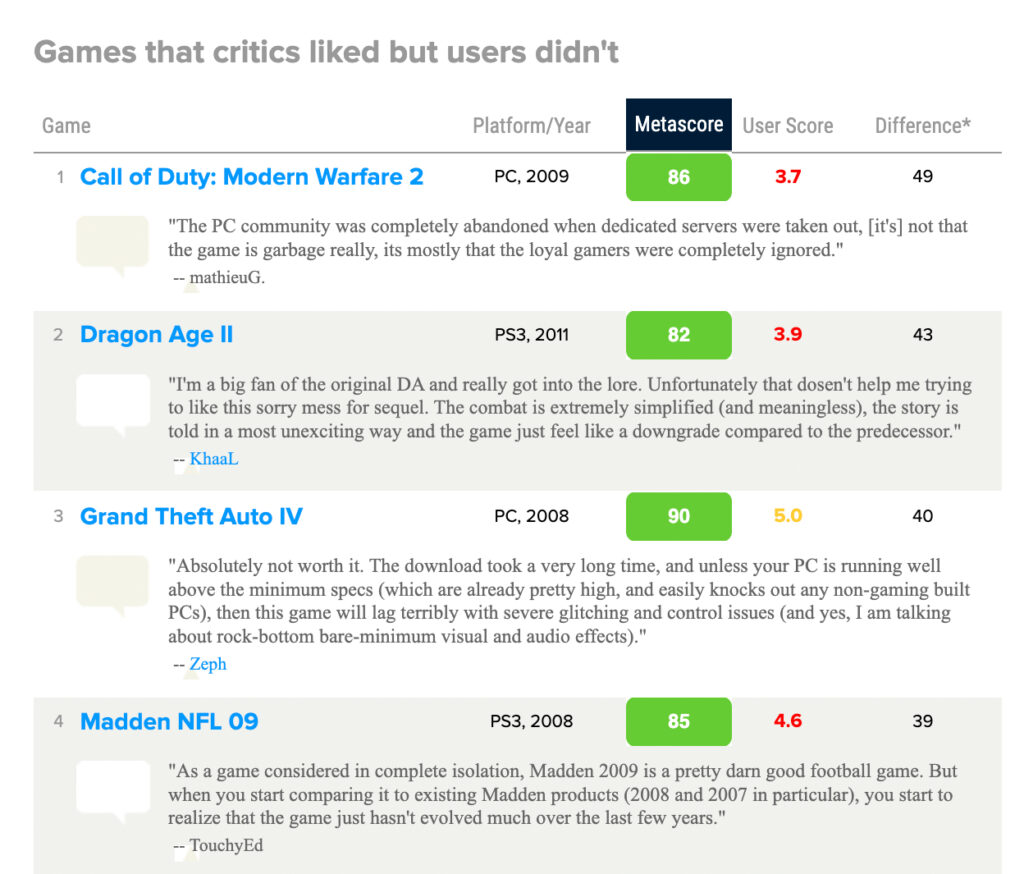
Having trusted in one set of heuristics (critical ratings, promotional material) and gotten burned, the user develops a defense mechanism against the same methods. They construct a new set of heuristics that discounts the opinions of major publications and doubts the fidelity of flashy advertisements (whose asterisked “not actual gameplay” fine print is now entirely obvious). They resist the temptation of enjoying the hot new restaurant, video game, or park attraction at launch in order to give the opening hiccups a chance to resolve. These consumers probe beyond the manufactured consensuses and seek out extreme opinions that encapsulate the best of the worst and the worst of the best.
This “special case” consumer, enwisened by past negative experience and buttressed by a new range of heuristics, slowly develops their own personal taste. Rather than seek validation from without, they use their individual nostalgia as a foundation for finding meaningful new engagements. The favorite restaurant, game, or attraction of yesteryear informs a refined process of pattern recognition. The transcendent experience, when it occurs, has nothing to do with being “hot,” “new,” or “exclusive.” It is timeless, eternal, and deeply connected to indelible aspects of humanity and nature. It demands no special promotion or cheerleading from professional shills. It immediately looks “right” and feels “right” upon being perceived by the right person.
Rather than being told how they should expect to interpret an experience by the media elite or the lowest common denominator that is mainstream culture, the “special case” consumer arrives with open mind and heart. Rather than squeezing their insecure, status-seeking purchase for all its worth, the “special case” consumer only seeks self-fulfillment. They savor and engage in every moment with the utmost sincerity. They learn that these immersive experiences are not as static as the appear, but eminently personal. Really, they are as personal as you wish (or are forced) to make them, channeled uniquely through each individual’s singular perspective. Therein lies the life-affirming beauty of the “experience economy” (though it is one that promotional machinations constantly pervert).
Entering into new, wholly independent relationships with chosen restaurants, video games, and theme parks marks the beginning of connoisseurship. Unlike critics, who aspire to guide the public in accordance with some unstated will to power, the enthusiast walks hand in hand with the artist towards the culmination of a sublime expression of craft. As a true fan, the “special case” consumer becomes an honest transmitter of their impressions. They weather the kinks and perform the “beta testing” that, to the uninitiated, might seem indicative of disqualifying imperfections.
For this consumer no longer views the chef, developer, or park builder as someone simply selling a product. These creative figures are fostering a spirit and enacting a vision that goes beyond commercial exchange. At their best, they are crafting pure experiences imbued with a boundless degree of personalization that can only reach their full potential based upon a reflexive engagement with their users. The best among these participants will not be the journalists desperately seeking to fashion a prefabricated narrative or the influencers looking to see and be seen holding the “right” opinion. They will not be the lowest common denominator audience who, insecure in their own taste, defers to the bought-and-paid-for wannabee “critics.”
Enthusiasts, free from ideological axes to grind and immune to outside expectations, are the best positioned to unleash artists’ creativity. They have been burned by the marketing machinery before and carry a learned aversion to its tricks. Operating on an inverted set of heuristics, they have even grown to privilege those rare works that actively downplay the usual hollow promises and hype. Free of any need to constantly create content, the enthusiasts scorn novelty in search of depth and lasting quality. Hurt before by the emotional manipulation wielded by luxury brands, they orient themselves against some pure expression of nostalgia: the comfort of home cooking, the sense of wonder felt when faced with their first sprawling digital world, the thrill of their first rollercoaster ride.
This emotional connection, when formed with a singular restaurant, video game, or theme park, transcends all commercial considerations. The consumer is invited “behind the curtain” and allowed to embark on the intimate, creative journey that undergirds the mass experience. That special relationship, rather than spurring greater expectations of “perfection,” transforms a work’s blemishes and bloopers into consequential, cherished details as part of a process of becoming.
Enthusiasts are the “subscribers” who stick around long after the opening luster has worn out. They are the collectors, the completionists, the trivia masters for whom no aspect of a beloved work is inconsequential. They have stopped trying to harness the art for their own ends and delivered themselves into the artist’s hands. They become a tool in his or her hands in pursuit of a “perfection” that can only be attained through the marriage of many subjectivities. The greater the enthusiast’s capacity to remember past experiences, tolerate experimentation, and understand the deeper process guiding creation, the sharper a tool they become. Once a chef, developer, or park builder has an array of these instruments at hand, they can cut a clear path towards offering the kind of rarefied experience that, in its ability to touch a wide swath of the public meaningfully, fulfills the art form’s transcendent potential.
By exploiting the desires of a non-discerning, lowest common denominator public, mainstream “critics,” “journalists,” influencers, and their ilk keep consumers and, thus, the artists down. By looking to embody the “everyman” or “everywoman,” these writers deny their own unique subjectivities and for the sake of offering some hackneyed “objectivity.” Rather than marrying the extreme opinions that define the outer bounds of passion, they commit to milquetoast critiques that seek only to secure for their audience the most tepid experience. This ties one hand behind the artist’s back as they are perpetually forced to “play the hits.” Those who happen to offend the “critic” during their solitary visit can look forward to being saddled with a paltry star rating forever.
Journalists are only rewarded with the authority to review art after proving themselves to be good lapdogs. After scrounging for years in service of the promotional news cycle paradigm, after familiarizing themselves with every trite narrative and tired trope, they are set loose to settle the score. Those who have grown to lament public taste are empowered to shape it. The opinions of those most willing to debase themselves are made gospel. With column as their sword and masthead as their shield, the lucky journalist who makes it to the top wages a personal crusade against the “backwards” tastes of their audience. Thoroughly malnourished due to years writing for a pittance, they cling to the “authenticity” of their experiences eating street food and cower before any encounter with luxury. They are not defenders of their readership, but double agents who have learned that, by omission, they may make the expression of any predilection seem justified.
Ultimately, once the public learns that the Fourth Estate does not experience things more deeply or perceive things more precisely than anyone else, journalistic authority as it relates to aesthetic experiences will collapse. Stripped of their publications’ decaying reputations, the profession will be revealed as less suited for promotion than social media influencers, less representative of the “everyman” than the review aggregate sites, and less capable of connecting all the dots than independent, enthusiast critics. The journalists’ only virtue, when that time comes, will be that they toe the ideological line of their bosses and ensure their most braindead readers remain secure in their worldview.
Finally, these relics will be buried and their star ratings will be struck from the record. The influencers, aggregated user reviews, and independent critics will each master their own domains. The consumer will know where each party stands and the robustness of the information each has to offer. The diverse, decentralized nature of the this three-pronged heuristic will immediately surpass the disingenuous detritus of the journalistic profession. Consumers will quickly gravitate towards a range of discrete sources that feed them worthwhile content that aligns with personal tastes.
The ability of public relations and marketing departments to manipulate the public will be moderated, for these companies will no longer benefit from the one-stop shopping of buying influence through legacy media. Rather than laundering a new product’s reputation through personal connections with editors, generous ad spending, and spoon-fed copy that are all kept under wraps, these firms must induce a range of individual influencers to sell out. While plenty of these conspicuous consumers will surely trade ethics for access, the public will be less deceived by accounts that are clearly dedicated to promotion (than publications that claim to inform). Likewise, while aggregate site reviewers and independent critics could be bought, there will exist the temptation (among some influencers as well) to blow the whistle. Without any pot of gold position waiting at the end of the rainbow, individual credibility will trump sycophancy. Consumers will take all the free content they can get but, untethered to any overarching subscription model, will only support creators who refuse to deceive them.
When influencers and review aggregate sites disagree on the merits of a new restaurant or video game, the independent critic will particularly shine. These enthusiasts, rather than piling just one more throwaway account onto the fire, will help collate and condense the many threads of the experience. When it comes to overarching qualities like atmosphere and immersion, they can draw on many more hours of observation. When it comes to aspects like interaction and reflexivity, they will have engaged longer and more deeply with the work. When it comes to particular set pieces like dishes or missions, they can attest to consistency and lasting quality. Independent critics will ensure that the deepest dive is only ever a click away. Their expertise will not be built on the basis of any professional title, but constructed in toto whenever passion and obsession drive them to testify. That will not make these enthusiasts infallible; however, by avoiding the black magic of omission, their detailed accounts will lay bare all latent biases and form a pristine subjective truth.
Along the way, the documentary value of these independent critics’ accounts will remain enriching even decades later. Written from the perspective of a superfan rather than a fly-by-night journalist, each work will be more firmly embedded in the spirit of the times. Rather than aspiring towards some neutered objectivity, the enthusiast’s passionate engagement with the product will provide a window into the how and why behind its appeal. Future anthropologists and kindred connoisseurs will find the method and degree of enjoyment far more interesting that some dead publication’s hollow sanction. Historians, by parsing these detailed accounts, may very well track the development of their subjects’ overarching art forms on the basis of contemporaneous impressions and interpretations. This material will transcend dead, archival data to offer a living testament to America’s golden age of interactive art.
Imagine if someone cataloged every one of Carême or Escoffier’s experiments, thought processes, and inspirations? What if, rather than receiving only the cream skimmed off the top of their creations and delivered into the canon, descendant craftsmen and women could access how the greatest chefs grappled with every week of every season? What if they could realize the lost potential of every idea that, for want of technology or technique, ended up on the cutting room floor?
Likewise, as digital worlds seem set to expand exponentially in line with increasing computing power and graphical capability, it will be instructive to document engrossing environments from another era. This is particularly true if changes in hardware make playing old titles prohibitive to the larger public. Plus, should artificial intelligence begin to play a bigger part in the design and population of digital worlds, it will be important to preserve some reference to wholly human-made predecessors. Can AI contrive the same engrossing details that captured hearts in days gone by? Can scope, scale, and random generation replace the feeling of a handcrafted experience? It is only by capturing the fullness of a work’s depth and one’s reaction to it that humanity may remember what has been lost to progress.
Even theme parks, in their attempt to embody each successive generation’s fantasies, benefit from being documented in detail from era to era. This process not only organizes and preserves childhood nostalgia, but guards against the dilution of some essential spirit as companies like Disney charge headlong towards increased commercialization of their experience. As practical effects give way to virtual reality and parks grow more congested than ever, it is important, once more, to recall what has been lost to progress.
Following this logic, just as video games and theme parks already inspire detailed wikis and online guides, you would like to see restaurants given the same treatment.

Yelp, Google, or Tripadvisor may one day spawn an American site dedicated more specifically to restaurant reviews like Japan’s Tabelog. Japanese culture disincentivizes conspicuous consumption, so users of the site distinguish themselves with “consistently meticulous, accurate, and detailed reviews” posted under pseudonyms (ring any bells?).
It is hard to imagine contemporary American materialism ever fading, or the country’s influencer class ever willingly forgoing the social capital they stand to gain by broadcasting experiences under their own names. Perhaps, then, users might be required to upload receipts on the backend to verify they actually visited a given restaurant and paid for their own meal. In this manner, disreputable influencers will stick to producing purely visual content for social media while rating and interpretation can be better reserved for ethical participants. Of course, this alone would not guarantee that users operate in good faith; however, it would provide the consumer with the tools to establish a reviewer’s credibility. (CellarTracker, for example, allows you to contextualize wine scores based on participants’ regions or varietals of focus). Such a site would amount to something like a more transparent Opinionated About Dining, in which readers could more easily distinguish robust local recommendations from the faux expertise of a self-selected jet set.
Alternatively, and perhaps even more effectively, you dream of the development of local, regional, and national gastronomic wikis that venture beyond the egoism of reviews and establish a living treasury of all the dishes served at all the restaurants across each year, month, and week of the season. While Yelp already serves to organize all its users’ pictures of a given establishment across categories like “Food,” “Inside,” “Drink,” “Outside,” and “Menu,” a dedicated gastronomic wiki could more closely track the development of particular dishes over time while also preserving the most fleeting preparations.
For steady, classic restaurants, the entries need only attest to the food’s consistency. However, in the domain of fine dining and hospitality’s aspiration towards art, such a system transcends the superficiality of overall star ratings by organizing subjective impressions of individual works. Additional information like a dish’s wine pairing (or a user’s chosen wine that evening) would add appreciable detail (for what is a bottle wine if not a whole micro-experience within itself?). The creative efforts of individual chefs and cooks could also be captured and maintained even as they move on to greener pastures. The subjectivity involved in evaluating service might make it hard to develop a wiki-style “consensus.” Nonetheless, an impartial editorial hand could help present conflicting subjectivities in a way that maximizes utility for the reader.
A food ecosystem comprised of flagrantly promotional content creators on social media, verified yet anonymous ratings on review aggregate sites, and encyclopedic tracking of restaurants’ growth on a collaborative gastronomic wiki would secure the democratization of American fine dining. Such an environment would erase any need for parasitic journalists whose shallow coverage simply reflects a desperate clutching onto of fading power. It would deliver the public from heuristics engineered by professional manipulators and place them in the care of neighbors driven only by their own passions. It would put Michelin in its proper place as a guide suited only to tourists and allow this country the culinary self-definition it has deserved for so long.
The independent critic, the enthusiast must only bide time as their “professional” brethren see about the controlled demolition of their publications’ reputations. By contradicting each promotional puff piece and shallow hatchet job, they may help accelerate that process.
Independent critics, as they await the arrival of that new ecosystem, can only keep their faculties sharp. They can only, by example, reveal the shaky ground on which so-called “professional expertise” rests.
Dressing one or two visits to a restaurant in pretentious language and offering them up as a definitive account worthy of a permanent rating is farcical. Using hyperbole to make up for analytic bankruptcy is an insult to every establishment a publication has ever reviewed. The critical bar has been set desperately low by writers whose readers could likely not stomach sharing a table with them. American food culture is ruled by a hivemind of masochists who only bear the pain so they can steer the public towards supporting their friends, friends of friends, business associates, ad buyers, and ideological allies.
As their credibility crumbles, these journalists will turn towards increasingly divisive rhetoric to galvanize their “team.” They will happily sacrifice hospitality’s immense power to bring diverse peoples together to get just one more sip from the cup of relevance.
One by one, misled consumers will get off the merry-go-round of new openings and releases. They will realize that aping the tastes of the cultural elite represents a denial, rather than an affirmation, of their distinct identity.
Modern consumers already waste their money trying to win the affection of their favorite OnlyFans accounts month by month. They waste their money opening loot boxes and buying in-game currency to secure a competitive edge in games they won’t even be playing by the time the next big thing comes around. They waste their money paying propagandists on Substack to tell them what they want to hear and nebulous crowdfunding campaigns that only indulge their slacktivism.
By “subscribing” to restaurants that strike an emotional cord, visiting them consistently, documenting their work, and championing their spirit, consumers fulfill their part in advancing American gastronomy. Rather than parasocially following in the footsteps of their favorite crypto-shill content creators, they may socially, viscerally engage with chefs in collaborative pursuit of ever greater flavors.
By rising above the FOMO that damns them to a treadmill of disposable encounters, diners become enthusiasts who naturally advocate for the public’s self-determination of taste. They banish snobbery, latent bias, and the influence of marketing budgets by turning within for guidance. They build a constellation of honest appraisals, free from meddling self-promoters, that once more affirms hospitality’s power to unite a woefully fragmented population.


